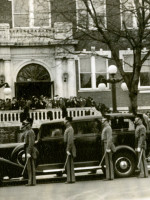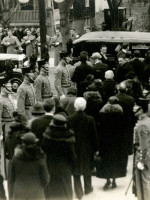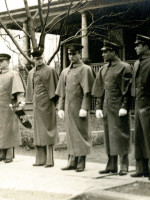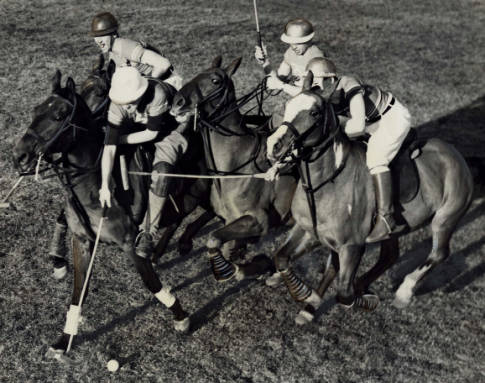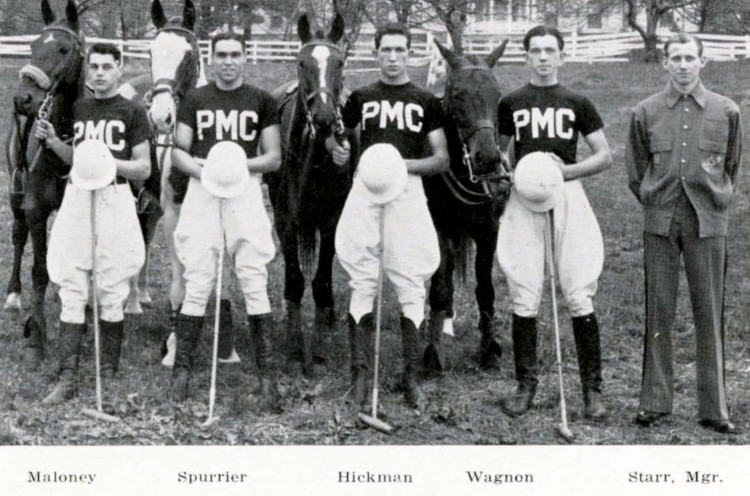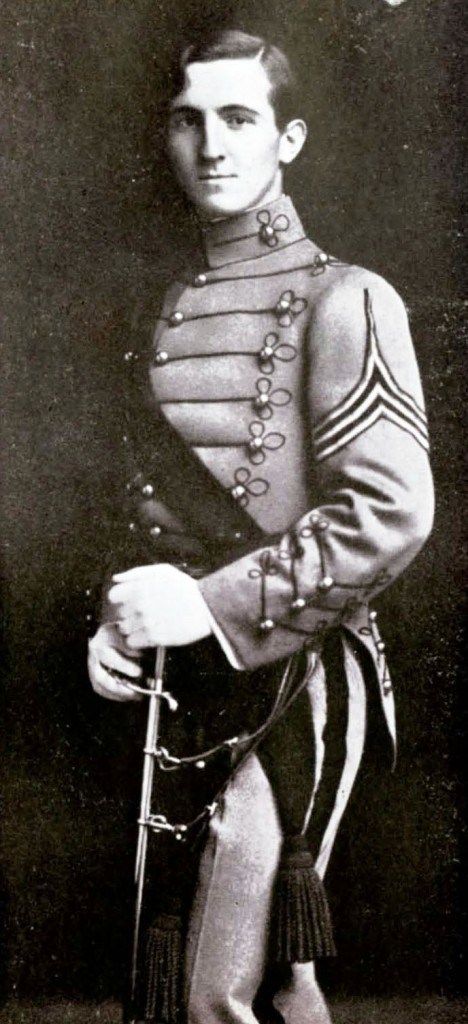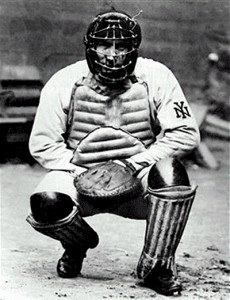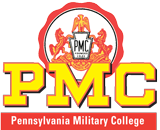Within five years of its introduction, PMC Polo teams had become a dominant force on the collegiate level. They regularly defeated their opponents, whether they were colleges, universities or area clubs. The 1935 team distinguished itself for its unselfish and honorable actions.
The PMC team, consisting of seniors Jack Young ’30 and Frank Kaiser ’30 and freshman Walter Jones, were playing the Ridgewood Riding Club (NJ). Victory would earn the team the title Eastern Junior Polo champions and make them eligible to play the Detroit Riding Club in the Junior East-West Championship tournament. The very talented Eckford Rufner, a 17 year old, led the Ridgewood team. During the second period, Rufner’s pony lost its balance and he was crushed under the fallen horse. The score at that time was 3 ½ – 2 in favor of PMC Ridgewood did not have a substitute and the title was awarded to P.MC.
The cadets requested that the Eastern Junior Championship be transferred to Ridgewood. The U.S. Polo Association ruled that the accident was unavoidable and PMC must retain the title. The school withdrew from the East-West Championship Tournament. As a final token of their respect, the polo team and the entire Senior Class attended the funeral of Rufner. Colonel Hyatt, Lieutenant Comfort and Captain Schaubel ’30 were also present.
